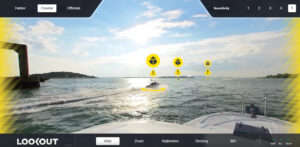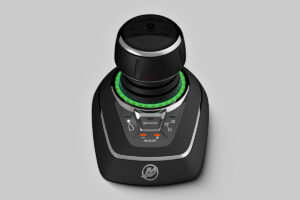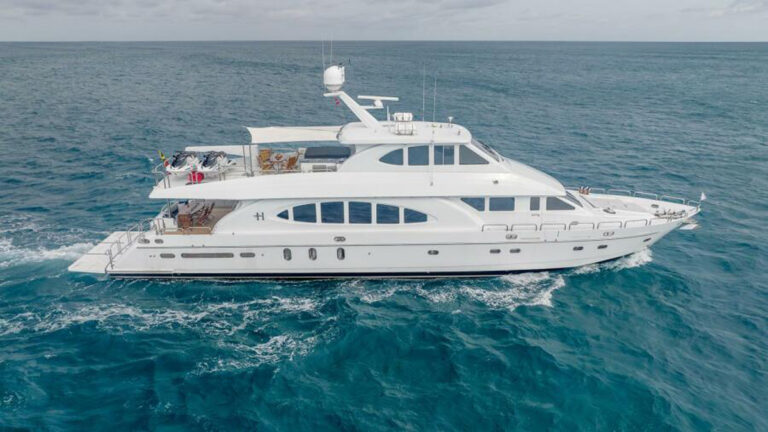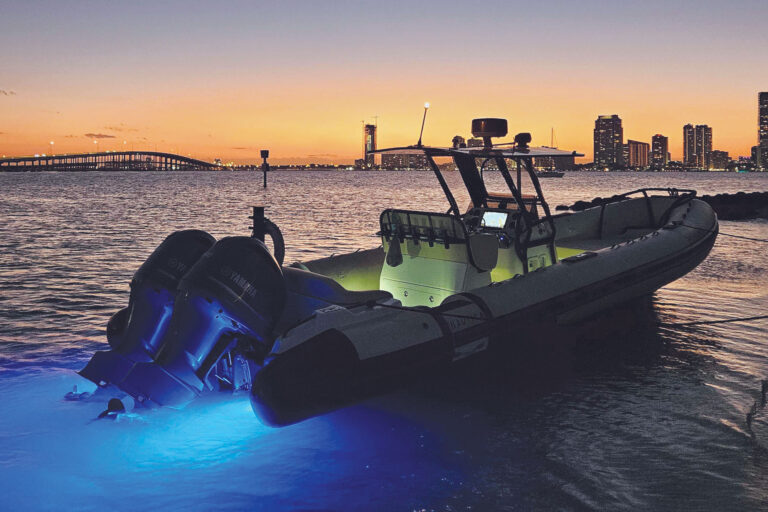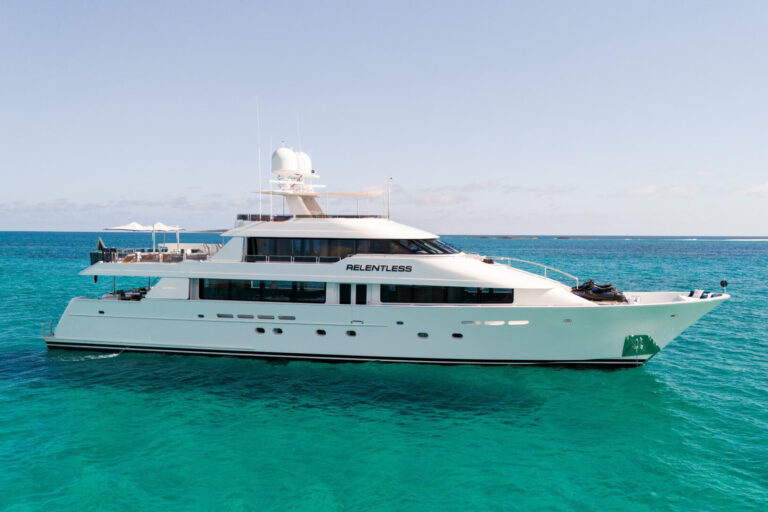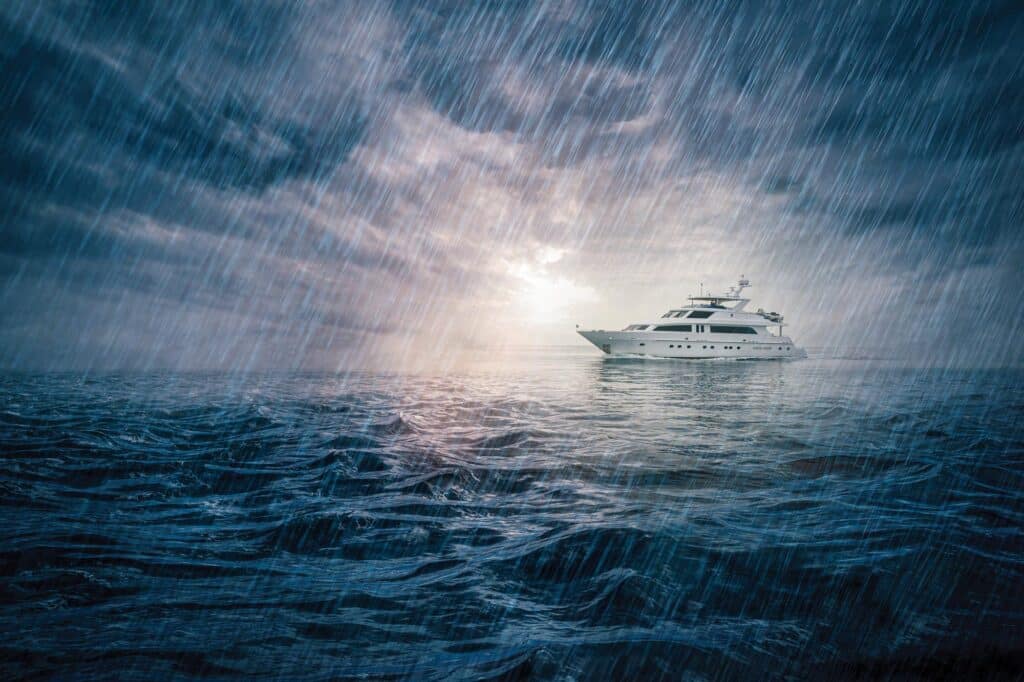
Call it a first-world problem, but rain can cause performance issues for some satellite-communication frequencies. This isn’t because onboard satcom equipment is faulty or inadequate—it’s not. Rather, certain bands of radio-frequency energy physically attenuate as they travel through precipitation-streaked time and space.
Fortunately, not all satcom frequencies suffer from rain-fade issues, and hardware—including Intellian’s recently unveiled FB500 terminal—already exists to help leverage this bandwidth.
Supporting Intellian’s hardware is Inmarsat’s FleetBroadband (FBB) service, which delivers a near-global (99.9 percent availability) rain-fade-free service by harnessing the lower-frequency L-band (1 to 2 GHz) range. The trade-off, however, is speed: FBB delivers speeds—up and down—that are measured in kilobits per second (Kbps), a comparatively pedestrian pace that’s fine for most applications but still a long row home from VSAT’s metrics.
While Inmarsat debuted FBB service in 2007, and while Intellian has manufactured FBB terminals since 2010, the fourth-generation FB500 antenna ($15,800) has the company’s latest hardware innovations and refinements. This includes Inmarsat’s latest L-band modem, plus the ability to connect to shore-based 4G/5G/LTE cellular networks to deliver lowest-cost routing for coastal cruising.
With regard to equipment, an FB500 consists of a radome-enclosed antenna (called an abovedeck unit, or ADU) that’s stabilized across three axes and that delivers unlimited azimuth rotation, a belowdecks unit (a black box that is typically rack-mounted), coaxial cabling and a power cable (either DC or, if AC is required, via Intellian’s AC/DC power supply adapter) that powers the BDU.
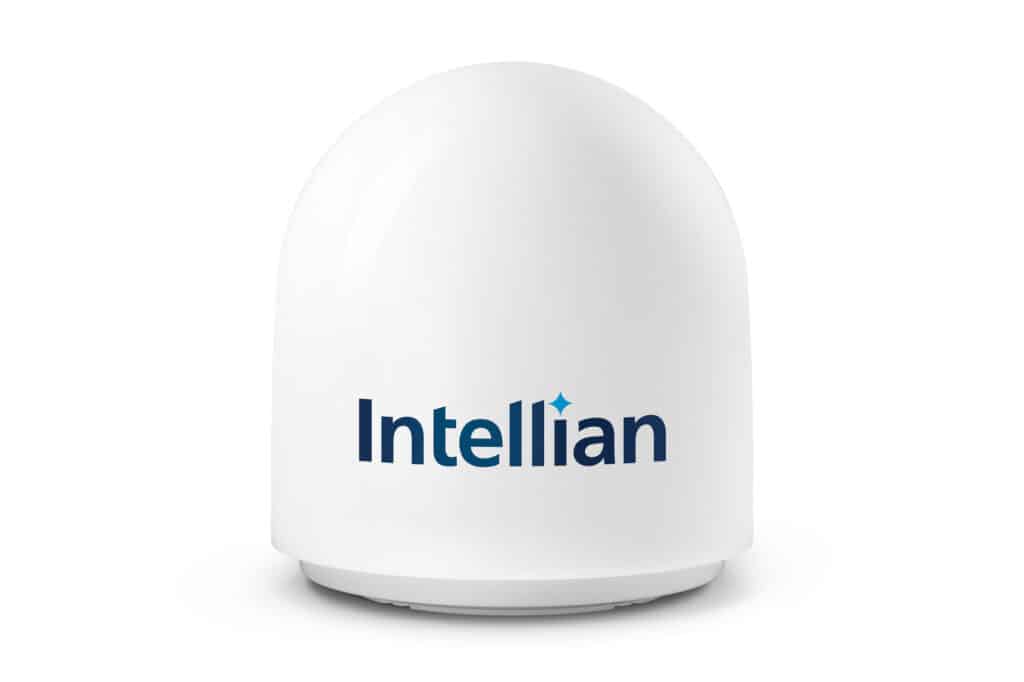
A network operator’s SIM card slots into the back of the BDU, which broadcasts its connectivity to networked devices via a built-in Wi-Fi antenna. The system has an embedded and software-based Private Automatic Branch Exchange, which supports multiple telephone lines, as well as a firewall. Owners (or the yacht’s network operator) can configure their system using Intellian’s Aptus LX terminal-management software. This management tool delivers the ability, for example, to whitelist and blacklist individual wireless devices from leveraging L-band connectivity; furthermore, once a device has been greenlighted, owners (or admins) can assign data and quality caps and permissions (such as the ability to place phone or video calls) to each individual device.
“This all helps ensure that owners have control over their airtime,” says Paul Comyns, Intellian’s director of sales and business development.
Yachts, after all, are never democracies.
An FB500 connects to Inmarsat’s constellation of I-4 satellites, and the terminals play nicely with Inmarsat’s next-generation I-6 satellites, as well as Inmarsat’s upgraded L-band service, ELERA, as they come online.
FB500s can be employed in several ways. Each FB500 can be leveraged as a stand-alone L-band terminal for lower-bandwidth communications at speeds of up to 432 Kbps. “For yachts that have room for one antenna and less demand for such bandwidth-intensive applications, L-band is ideal,” says Comyns, adding that the FB500 “enables users to have high-quality voice and video calls, internet access and file transfers.”
Caveat emptor: 432 Kbps may be fast enough for downloading email or weather GRIB files, but it’s not quick enough for streaming Netflix (read at least 5 Mbps of downlink speed). When faster speeds are required, and when there’s more abovedecks and belowdecks space to work with, an FB500 can be paired with an Intellian-built GXNX-series VSAT system and a belowdecks Intellian GX Mediator, the latter of which determines which network and antenna to leverage and when, to create a dual-antenna Fleet Xpress installation. Depending on the size of the antennas and the airtime provider involved, Fleet Xpress can deliver downlink and uplink speeds of up to 16 Mbps and 4 Mbps. However, 2 Mbps and 512 Kbps are more realistic metrics when airtime costs are considered.
In this situation, the VSAT terminal delivers high-speed service for high-bandwidth applications, while the FB500 adds reliability and helps populate the connectivity map. “When it comes to larger yachts and superyachts, L-band is more commonly installed as a VSAT backup,” Comyns says. “Configured in this way, the GX [antenna] can reliably fail over to the L-band terminal when environmental conditions severely impact the GX [terminal’s] Ka-band data connection.”
Installation depending, Comyns says, the FB500 can sometimes also serve as a back door for off-site technicians to investigate, and possibly fix, onboard VSAT issues.
The FB500’s third operational mode is that of a safety tool. Thanks to the proven reliability of L-band frequencies, an FB500 can also act as an emergency safety tether that connects a well-equipped yacht with one of Inmarsat’s global Maritime Rescue Co-ordination Centres and—thanks to Inmarsat’s distress-priority chat feature—to multiple nearby vessels.
While the FB500 builds on previous generations of hardware and software refinements, it also introduces cellular connectivity to the picture. “Intellian’s L-band BDUs have a [wireless area network] port that can be configured to connect via a different network connection than the default satellite link,” Comyns says. “For example, a [third-party] LTE/5G modem that can provide a more cost-effective connection when in range.”
As for its target audience, the FB500 is aimed at any yacht that can accommodate its size (28.85 by 31.38 inches), heft (65 pounds for the ADU) and belowdecks equipment, and any yacht owner who wants to access email, data and voice calls, globally and irrespective of the weather. Factor in the FB500’s ability to provide L-band connectivity for a Fleet Xpress installation, and its capabilities for emergency communications, and the FB500 is ready for off-piste waters.
So if you’re a yachtsman seeking a global, durable communications setup and don’t mind L-band’s pedestrian-like pace, or if you want Fleet Xpress’ speed, bandwidth and L-band coverage, Intellian’s FB500 could be worth close attention. First-world problems like rain fade, after all, don’t really matter with a weather-proof satcom system.
Little Brother (is listening)
If the FB500’s radome exceeds the aesthetic or physical sensibilities of a yacht’s skyline, a smaller-ride option is Intellian’s FB250 terminal for L-band connectivity. The FB250’s ADU measures 11.5 by 11.6 inches, and it weighs a mere 11.6 pounds. The trade-off? Pace: The FB250 moves data at speeds of up to 284 Kbps.



